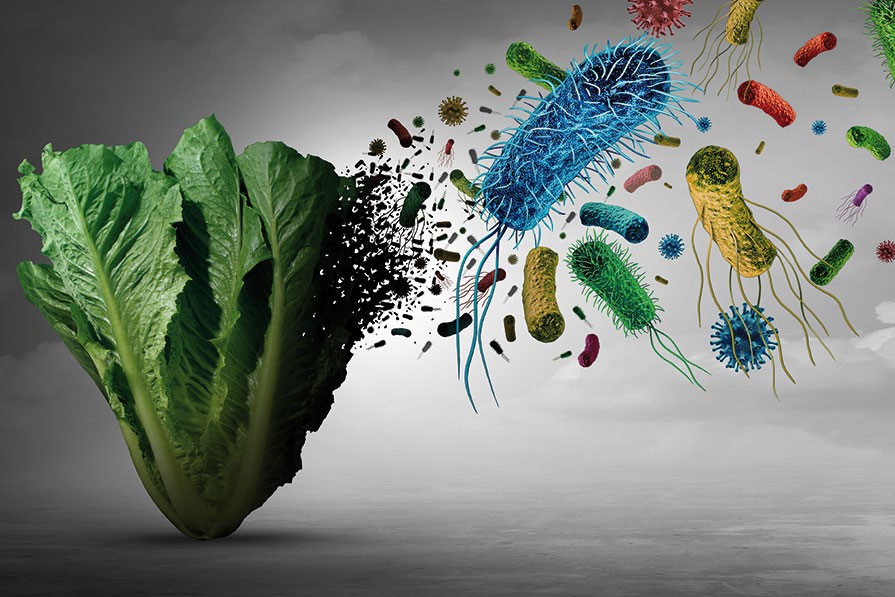
First aid in case of food poisoning
About food poisoning: the consumption of food contaminated with viruses, bacteria or toxins can lead to food poisoning. Some cases resolve without medication, but others can lead to complications or death without proper treatment or intervention
What is food poisoning
Food poisoning is a condition that involves inflammation of the lining of the intestines, particularly the stomach and bowel.
It is usually caused by viruses, bacteria, parasites or toxins that infect a person and cause symptoms.
Other causes may result from mishandling, improper cooking or poor food storage.
The body’s reaction to illness, which occurs following consumption of contaminated food, generally depends on the organism, the amount of exposure, age and general health status.
Groups at high risk of foodborne illness include the elderly, infants and young children, people with chronic diseases and pregnant women.
These people may have a weak, impaired or underdeveloped immune system, which makes it more difficult to fight infections caused by food.
Although the symptoms are rather annoying, food poisoning is not uncommon
The onset of symptoms after consumption of bacteria-infected food may occur within a few hours.
However, there are cases where incubation takes much longer, depending on the virus or toxin involved.
Here are the common symptoms of food poisoning:
- Feeling of malaise or nausea
- vomiting
- diarrhoea
- Stomach cramps and abdominal pain
- Lack of energy or feeling of weakness
- Loss of appetite
- Muscle pain
- Cold chills
Most symptoms pass within a few days and the person is expected to make a full recovery.
In many cases, the doctor will diagnose food poisoning simply on the basis of the symptoms.
Although the main symptoms are those described above, the person may also present with high fever, headache, muscle and joint pain and blood in the stool.
Some may become dehydrated and feel a dry mouth and throat. On rare occasions it may also cause blurred or double vision, tingling or weakness.
If you or others experience any of these symptoms, seek medical attention immediately.
First aid for food poisoning
Naturally, the level of attention must be appropriate to the severity of the symptoms and the danger of what has been ingested: a slightly damaged tomato does not require the same level of anxiety as the ingestion of a poisonous mushroom.
There is no need to call an ambulance in case of slight discomfort, but omission or underestimation of the risk should be avoided at all costs.
Here is what to do in case of food poisoning.
- Lie down and rest
Have the person lie down and rest to recover lost energy.
If the person vomits, give small sips of drinking water to avoid dehydration.
If vomiting is accompanied by diarrhoea, it is even more important to drink water to replenish fluids lost from the body.
- Avoid solid food.
If the person feels hungry but vomiting is still present, avoid solid foods in the meantime.
Feed light, bland foods such as saltine crackers, bananas, rice or bread.
Also do not administer alcohol, caffeine or carbonated drinks.
- Taking medication
There are medications to reduce the main symptoms of intoxication, i.e. diarrhoea and vomiting.
Most of them are available over the counter, while some can be prescribed.
It is advisable to consult a doctor before taking drugs, as some infections may worsen when taking non-prescribed drugs.
- Seek help in an emergency
If symptoms worsen and vomiting and diarrhoea persist, it is a good idea to call 112 for emergency help.
While waiting for help, monitor the person’s condition and drink plenty of water to avoid dehydration.
Read Also:
Emergency Live Even More…Live: Download The New Free App Of Your Newspaper For IOS And Android
FDA Warns On Methanol Contamination Using Hand Sanitizers And Expands The List Of Poisonous Products
Poison Mushroom Poisoning: What To Do? How Does Poisoning Manifest Itself?
Hydrocarbon Poisoning: Symptoms, Diagnosis And Treatment
Mercury Poisoning: What You Should Know
Irritant Gas Inhalation Injury: Symptoms, Diagnosis And Patient Care
Respiratory Arrest: How Should It Be Addressed? An Overview
Smoke Inhalation: Diagnosis And Patient Treatment
Emergency Rescue: Comparative Strategies To Exclude Pulmonary Embolism
Pneumothorax And Pneumomediastinum: Rescuing The Patient With Pulmonary Barotrauma
Barotrauma Of The Ear And Nose: What It Is And How To Diagnose It
Decompression Sickness: What It Is And What It Causes
Seasickness Or Car Sickness: What Causes Motion Sickness?
Identifying And Treating Carbon Monoxide Poisoning
Cadmium Poisoning: Symptoms, Diagnosis And Treatment


